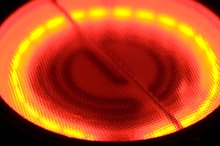Side Effects of Burning Skin
Burning skin is a painful condition that can occur when the skin comes into exposed to fire, hot surfaces or too much sun exposure. According to the Merck Manual, burns can affect different layers of your skin 1. A first-degree burn is superficial as it affects only the epidermis (outer layer of skin). A second-degree burn, also called a partial-thickness burn, affects the epidermis as well as the dermis (middle skin layer). A third-degree burn, also known as a full-thickness burn, affects all three skin layers, which includes the epidermis, dermis and fat layer. Burned skin can lead to extensive and life-threatening complications.
Infection
According to the University of Maryland Medical Center, burnt skin can make you susceptible to infections 2. Sometimes, it can be difficult to tell the difference between the redness of a burn and the redness of infection. Pay attention to the color of your burnt skin. Sometimes, an infection is present if the skin is purple and swollen. Also, your burn can creep into deeper layers of your skin. For example, infection in a first-degree burn can eventually extend to all three layers of your skin. An infected burn will also leak a green substance, or pus, and fever could develop.
- According to the University of Maryland Medical Center, burnt skin can make you susceptible to infections 2.
- Sometimes, an infection is present if the skin is purple and swollen.
Skin Cancer
How to Treat a Burn on the Fingers
Learn More
The Mayo Clinic says that sunburned skin can raise the risk for developing skin cancer. Constant sun exposure alters the genetic material of your skin known as DNA (deoxyribonucleic acid). Skin cancer commonly forms on your chest, face, lips, arms and legs.
Dehydration
Burning skin over a large region of your body can also lead to dehydration. According to the University of Maryland Medical Center, the skin loses its fluid content when it is burned 2. Symptoms of dehydration include experiencing thirst, lightheadedness, dizziness, weakness and scanty urination.
Shock
How to Accelerate Skin Growth for Burn Wounds
Learn More
The Merck Manual states that burning skin can lead to shock 1. Shock is a medical emergency in which the blood pressure dips so low that not enough blood can circulate to your organs.
Other Side Effects
According to the Merck Manual, deep burns can lead to scar formation, eschars and skeletal muscle breakdown 1. Eschars are patches of dead skin that sometimes occur as burnt skin is healing. These thick patches of necrotic skin can compromise blood flow. Skeletal muscle breakdown can result in myoglobin (a protein in the muscle) release, which can eventually reach the kidneys and cause kidney failure.
Related Articles
References
- Merck Manual: Burns
- University of Maryland Medical Center: Burns
- Knowlin, L., Stanford, L., Moore, D., Cairns, B., & Charles, A. (2016). The Measured Effect Magnitude of Co-Morbidities on Burn injury Mortality. Burns : Journal of the International Society for Burn Injuries, 42(7), 1433–1438. http://doi.org/10.1016/j.burns.2016.03.007
- Hilton G. Thermal Burns: The ABCs are crucial, since the major threat is often inhalation injury. Am J Nurs. 2001;101(11):32-34. doi:10.1097/00000446-200111000-00017
- Cleveland Clinic. Burns. Updated August 31, 2017.
- Thom D. Appraising current methods for preclinical calculation of burn size - A pre-hospital perspective. Burns. 2017;43(1):127-136. doi: 10.1016/j.burns.2016.07.003.
- Knowlin, L., Stanford, L., Moore, D., Cairns, B., & Charles, A. (2016). The Measured Effect Magnitude of Co-Morbidities on Burn injury Mortality. Burns : Journal of the International Society for Burn Injuries, 42(7), 1433–1438.
Writer Bio
Lisabetta Divita is a physician whose love for writing flourished while she was exposed to all facets of the medical field during her training. Her writings are currently featured in prominent medical magazines and various online publications. She holds a doctorate in medicine, a master's in biomedicine, and a Bachelor of Science in biology from Boston College.







